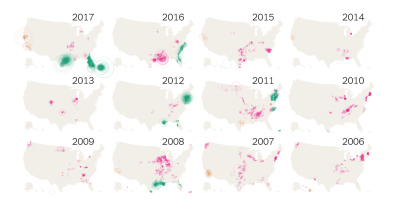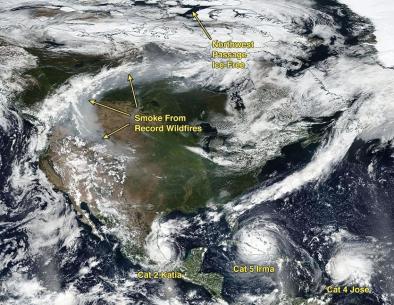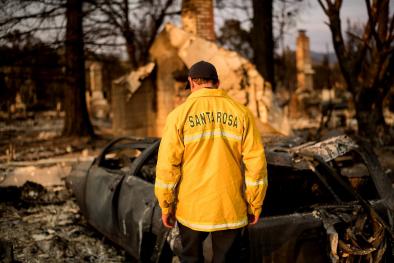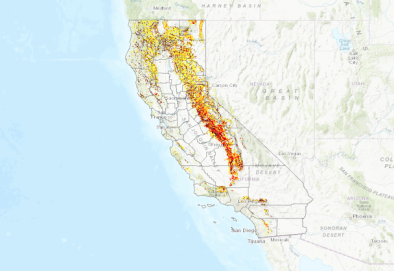California Wine Country Fires October 2017
Trends in California driven by climate change—including higher temperatures and drier conditions—are elevating the risk of dangerous and destructive wildfires across California and the western United States.
On October 8, a group of fires exploded across a wide swath of Northern California.[1] Taken as a group, the fires are among the worst on record in the state in terms of lives and property lost.[2][3] After just one week, the fires have killed at least 41 people, burnt more than 200,000 acres, destroyed or damaged more than 5,500 homes, and displaced 100,000 people.[4] Governor Jerry Brown declared a state of emergency in Butte, Lake, Mendocino, Napa, Nevada, Orange, Sonoma and Yuba counties.[5]
By the end, the Wine Country fires killed 42 people, destroyed 8,700 homes and buildings, and burned 245,000 acres.[6] The event was deadliest, most destructive, and one of the largest fires in California history.[7][8][9][10]
The combination of a wet winter followed by extreme heat and dryness has fueled record wildfires in many Western states.[11] Climate change compounds the risks of wildfires by extending the length of the fire season and adding to the intensity of droughts and heat waves. Park Williams, a climate and drought expert, noted, “... the combination of dry fuel, extreme heat and climate change is a recipe for what we are seeing."[12]







Climate science at a glance
- The extreme wildfires in California are consistent with the long-term trend of increasing wildfire activity observed in the western US.[1]
- The fingerprint of global warming has been been found in California wildfires.[7]
- Last year, the Soberanes Fire in California became the most costly wildfire fight in US history, with expenses totaling $260 million.[3][4]
- 13 of California's 20 largest wildfires on record have all burned since 2000.[6]
- Climate change was firmly linked to increased wildfire risk during the destructive 2014 season in a climate change attribution study.[7]
- Since 1970, temperatures in the American West have increased by about twice the global average, and the western wildfire season has grown from five to seven months on average.[8]
- Climate change has contributed to California's longer fire seasons, the growing number and destructiveness of fires and the increasing area of land consumed.[8][9]
- From 1979 to 2015, climate change was responsible for more than half of the dryness of Western forests and the increased length of the fire season.[10] Since 1984, those factors have enlarged the cumulative forest fire area by 16,000 square miles, about the size of Massachusetts and Connecticut combined.[10]
 Click the signal to the left to visit the extended
Click the signal to the left to visit the extended
signal page write-up, which has more information
on the links between climate change and
increased extreme heat and heat waves.
Related Content










